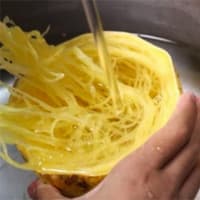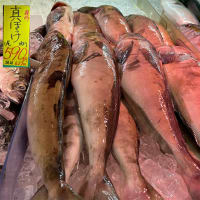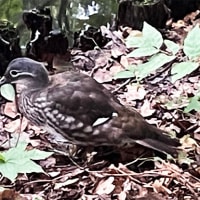


民衆の視点からの日本史というのは、なかなか見出しにくい。歴史というのはどうしても権力の移動についての争乱とか内戦とかに主要な「ながれ」を感じて、それを真ん中にして語っていくことになる。しかし、現実の時間は庶民の毎日の暮らしにこそ実質があって、そこでの変化や、変わらないものが歴史の最大の動因だと思う。
城郭だとか大土木工事を伴うような都城「平城京」「平安京」はたしかにモニュメント性が大きいけれど、市井の民の肉声は伝わってこない。それに対して中世の庶民の実態をわかりやすく伝えてくれる遺構は貴重。
江戸時代中期の地誌『備陽六郡志』(びようろくぐんし)に記された伝説の町「草戸千軒」は歴史の主舞台には登場しないけれど、瀬戸内海交易圏の重要地点として物資のながれを保証する機能を果たしたに違いない。政治の極限とも言える軍事では食糧確保こそが兵站として決定的に重要。火を見るよりもあきらか。まさに「ハラが減っては戦はできぬ」。海や河川の流路に面して、物流がさかんに行われる空き地、河川の中州などは商業交易の最適地。そこに行けばなんでもモノが買える場所はきわめて貴重な存在。
草戸千軒は、大正末から昭和初年にかけてこの芦田川の改修工事によって発見された。しかし当時は遺跡発掘に至ることはなく、本格的な発掘調査は昭和36-37年に至ってようやく着手され、その名前が全国に知られるようになったのだという。北海道の少年にも遠雷のように名前が刷り込まれていた。


図は一遍上人絵伝のワンシーンということだで、中世の商業都市での人びとの交易の様子。こうした情景は、絵伝のような絵画でしか見ることができなかった。そういう空間について具体的な遺物が出土して浮き彫りになっていったのだ。あくまでも事物に基づいた実証的な根拠に踏まえた「市」の全体像を復元させることができたのですね。もちろんそこから現実感のある実物大のジオラマに到達させるのは、さらに非常な努力が傾けられた。
草戸千軒では中国の宋銭・明銭などの貨幣や、商業取引の「約定書」などに用いられた「木簡」、商品としてもたらされた陶磁器が出土している。またそうした「商品」を貯蔵させたに違いない大量の土器など、活発な商取引の実態が明示的に示されている。
ここは芦田川の中州だけれど、周辺の郷村や「荘園」領地などの人びと、そして瀬戸内海を行き来する大型船から荷物を出し入れするジャンク舟からここに商品が運び込まれる。当然そこでは人間同士の情報交換機会があり、各地の情報がやり取りされたに違いない。
「最近、上方では織田って言うのが力を握っているらしいな」
「おうさ、信長ってのはもうすぐ太政大臣か、将軍になるってもっぱらのウワサ」
「そういえば、最近、天ぷらっていうのが流行っているって?」
「おお、たくさん油を使う超ぜいたく品ってことだけどなぁ」
草戸千軒の街角で、こういったウワサに耳を傾けていたいなぁ(笑)。・・・
English version⬇
A Crossroads of Goods, Money, and Information: Kusado-Senken 2023 Revisited-2
From the exchange of information on familiar foods to rumors of political and military affairs, information must have been exchanged as a melting pot of the common people in medieval society. ......
Japanese history from the perspective of the people is difficult to find. History is inevitably centered on conflicts and civil wars that are the main "flow" of power transfers, and is told from that perspective. In reality, however, it is the daily lives of ordinary people that are the most important factors in history, and it is the changes and things that do not change that are the most important factors in history.
Castles and other structures such as "Heijo-kyo" and "Heian-kyo," which involved major civil engineering works, are indeed very monumental, but they do not convey the real voices of the common people. In contrast, the remains that convey the reality of the common people in the medieval period in an easy-to-understand manner are valuable.
The legendary town of Kusado-Senken, mentioned in the mid-Edo period geographical journal "Biyoroku Gunshi," does not appear on the main stage of history, but as an important point in the Seto Inland Sea trade zone, it must have functioned to ensure the flow of goods. In military affairs, which can be called the extreme end of politics, securing food supplies is critically important for logistics. It is clearer than seeing fire. It is true that "you can't fight a war if your stomach is empty. Vacant lands and riverbanks facing the flow of oceans and rivers, where logistics are actively carried out, are the best places for commercial trade. Places where one can go to buy anything are extremely valuable.
Kusado-Senken was discovered during renovation work on the Ashida River between the end of the Taisho era and the beginning of the Showa era. However, at that time, the site was never excavated, and it was not until 1961-37 that full-scale excavation work was finally begun, and the name became known throughout Japan. The name was imprinted on Hokkaido boys like a distant thunderbolt.
The figure is a scene from the Ippen Shonin Eaden, which shows people trading in a medieval commercial city. Such scenes could only be seen in paintings such as the pictorial biography. Concrete artifacts were unearthed to bring such spaces into relief. You were able to restore the entire image of the "city" based on empirical evidence based solely on things. Of course, from there, it took a great deal more effort to arrive at a full-scale diorama with a sense of reality.
At Kusado-Senken, Chinese coins such as Sung and Ming coins, "wooden letters" used as "written agreements" for commercial transactions, and ceramics brought as commodities were excavated. A large amount of earthenware, which must have been used to store such "merchandise," clearly shows the reality of active commercial transactions.
Although the site is located on the middle bar of the Ashida River, goods were brought to the site by people from surrounding villages and "manor" estates, as well as by junks that took goods in and out of large vessels that traveled to and from the Seto Inland Sea. Naturally, there must have been opportunities for people to exchange information with each other, and information from various regions must have been exchanged.
I hear that Oda is in power in Kamigata these days.
"Oh, well, it is widely rumored that Nobunaga will soon become either Grand Minister or Shogun.
Speaking of which, is tempura in fashion these days?
"Oh, it's a luxury food that requires a lot of oil.
I wish I could listen to such rumors on the streets of Kusado-Senken (laughs). Laughs.



















